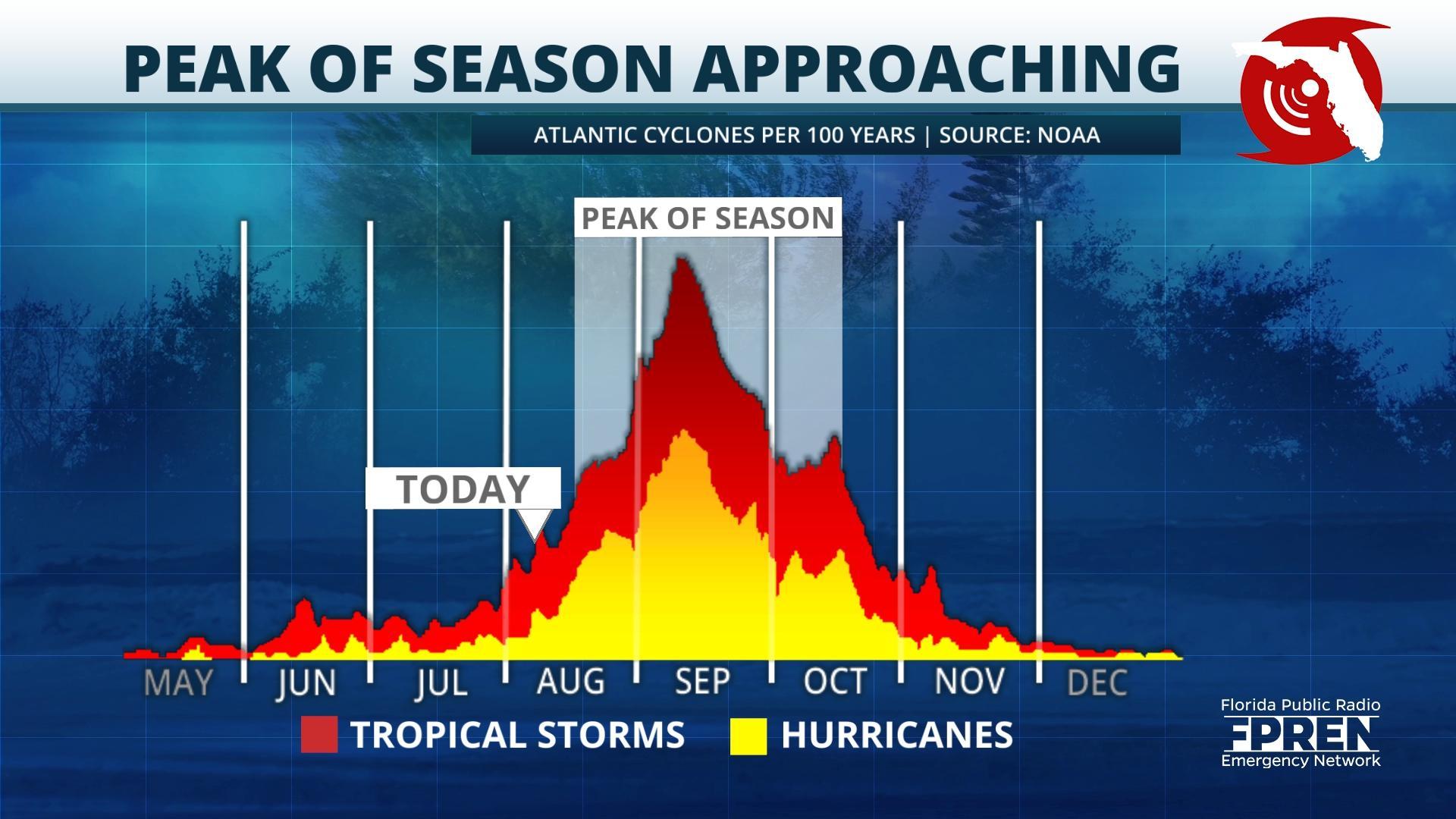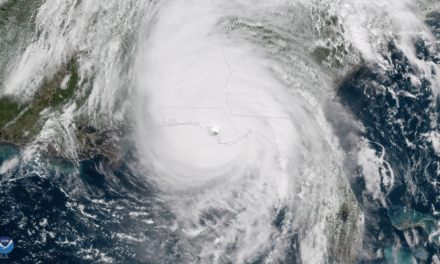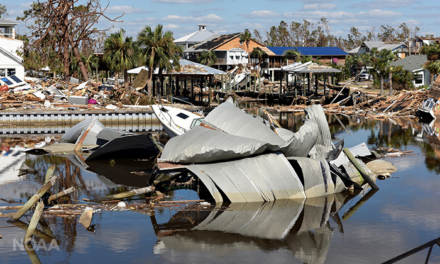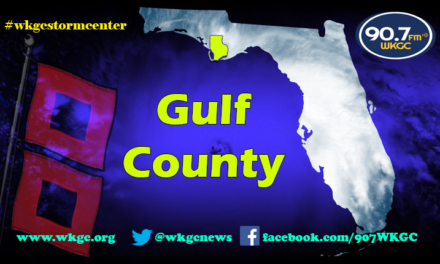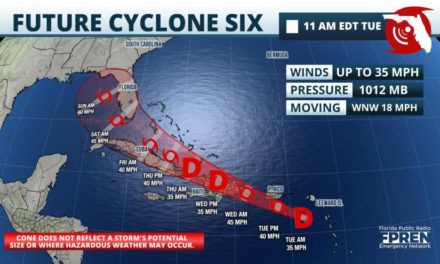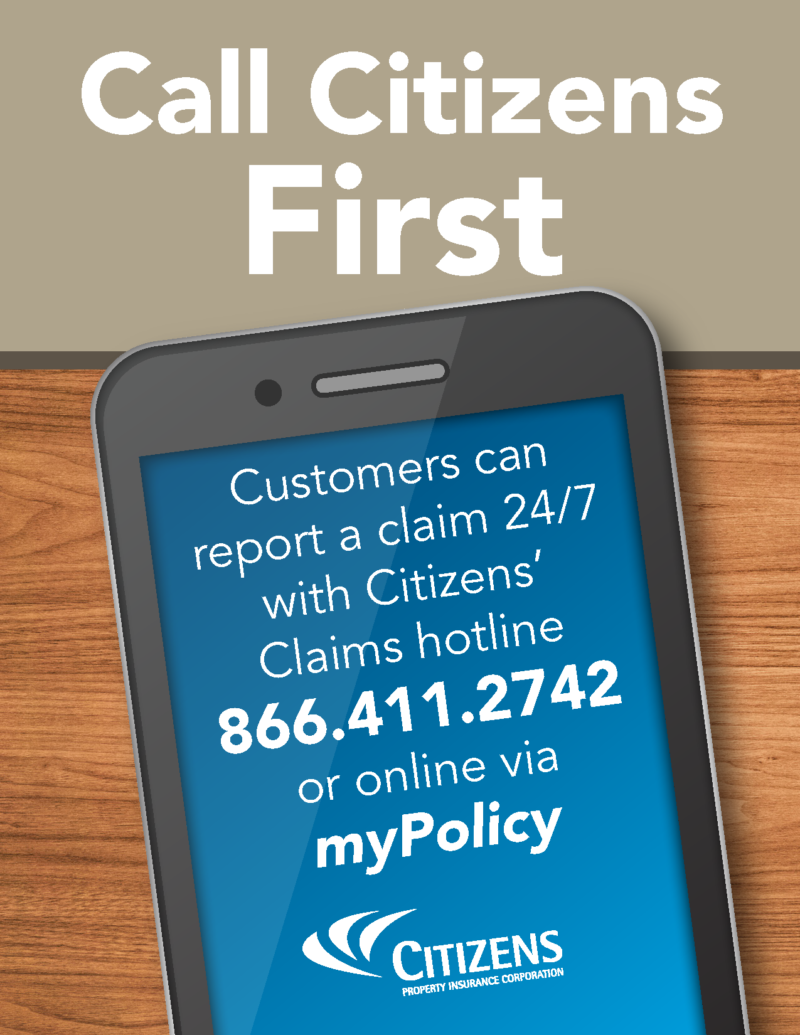
Isaias Leaves the Sunshine State Mostly Unscathed
Gainesville, Florida – Isaias may have spared the Sunshine State earlier this week, but the peak of hurricane season has only just begun, as nearly 80 percent of all tropical storms occur in August, September and October.
Isaias began its journey to the east of the Lesser Antilles on July 28 before crossing the island chain and exiting into the Caribbean Sea where it gained Tropical Storm status late July 29th. Isaias, maintaining tropical storm strength, crossed the Dominican Republic delivering heavy rainfall and strong winds to Hispaniola and the neighboring island of Puerto Rico on July 30th. Flooding from the storm’s heavy rains led to the death of at least one person in Puerto Rico according to the island’s Department of Public Safety.
Tropical Storm Isaias continued northwest and approached the Bahamas, strengthening into a Category 1 hurricane and lashing the islands with heavy rainfall, storm surge, and strong winds. Grand Bahama, and other neighboring islands, reported over a foot of rain with minor flooding, downed trees, and power outages. No deaths were reported in the island nation which continues to clean up from the devastation Hurricane Dorian brought last year.
Weakening slightly back down to a strong tropical storm Isaias took aim at the east coast of the Sunshine State. Fortunately, the center of circulation never made landfall in Florida as it turned northward off the coast of Miami and Fort Lauderdale skirting the coast. Outer rain bands produced light to moderate rainfall across east coast coastlines from Miami to Jacksonville from Sunday through Monday morning before Isaias shifted north-northwest, away from the coast and towards the Carolinas, intensifying once more into a Category 1 hurricane with maximum sustained winds near 85 mph. Hurricane Isaias ultimately made landfall in southern North Carolina around 11:10 PM EDT near Ocean Isle Beach.
Southeast Florida was left largely unscathed with only a few power outages reported. Approximately 200 people in Palm Beach County evacuated into public shelters, according to the county director of emergency management Bill Johnson.
“We are blessed that Hurricane Isaias spared us of significant damage,” Johnson said. “I am pleased that this was more of an exercise than a real event.”
The passage of Isaias was more of an unwelcome nuisance, especially for authorities dealing with surging coronavirus cases. Outdoor virus sights were forced to close ahead of Isaias, as well as beaches and parks.
Isaias continues to track northward through the Northeast Tuesday afternoon delivering tropical storm-force winds, heavy rainfall, and deadly tornadoes. Isaias is expected to cross into Quebec and transition into an extratropical cyclone overnight Tuesday and into Wednesday before dissipating over Canada’s far north.
Elsewhere in the Atlantic, the National Hurricane Center is monitoring a tropical wave to the southwest of Bermuda. This area of disorganized showers and thunderstorms has a low chance of developing over the next two to five days due to an abundant amount of dry air surrounding the system which will limit development. Atmospheric conditions across much of the Atlantic are expected to be unfavorable for tropical development over the next several days with weather models not indicating any areas of potential development.
The peak months of hurricane season take place from August to September. According to the National Oceanic and Atmospheric Administration, from mid-August through mid-October, tropical cyclone activity spikes, accounting for 78 percent of the tropical storm days, 87 percent of the Category 1 and 2 hurricane days, and a staggering 96 percent of the major (Category 3, 4 and 5) hurricane days.
Isaias may have been a nuisance to Floridians who spent time preparing but those preparations are not in vain. There is still a long way to go with the 2020 Atlantic Hurricane Season and we are just entering into the peak months of activity.
Story by Dr. Athena Masson of FPREN. WKGC is a FPREN station.





